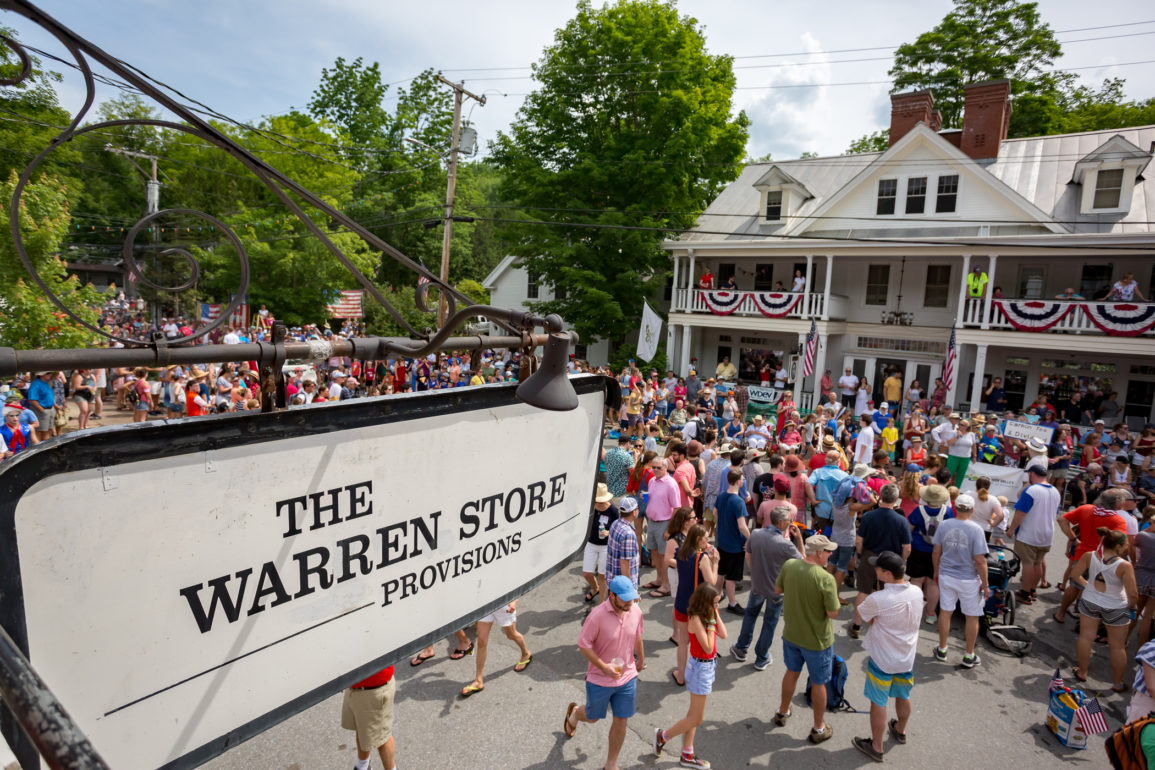*This is a multi-part series on the history of Warren, VT
The modern history of Warren, Vermont begins when French explorer, Samuel de Champlain, came to the territory of what was to become Vermont in 1609 guided by Algonquin Indians from Canada. He claimed northern Vermont for France. When the British won the French and Indian War in 1763, the territory was ceded to the Kingdom of Great Britain. From 1749-77 the territory was known as the New Hampshire Grants. It was known as such because most of the early settlers came in under land grants from Benning Wentworth, appointed the first Royal Governor of New Hampshire. But it was also claimed by the colony of New York and settlers to the territory were sometimes given conflicting grants by the colonies of both New Hampshire and New York.
In 1763 the British Authorities decided in New York’s favor but these claims by New York were opposed by the Green Mountain militia led by Ethan Allen, a man about whom George Washington said, “There is an original something in him that commands admiration.” In 1767, the privy council forbade New York from selling land in Vermont that was in conflict with grants from New Hampshire, reversing the 1764 decision. In 1777 Vermont established its independence and remained an independent republic called New Connecticut until 1791 when it joined the Union and became the 14th state under the name of Vermont.
During its 12 years as a republic Vermont thrived, its population doubling and redoubling due to the land rush from its neighbors to the south. The town of Warren started with a land grant of 16,660 acres awarded on November 9, 1780 to the Honorable John Throop and 67 associates. They struggled for nine years for the fee needed for the Charter. (Benning Wentworth was the first Royal Governor of New Hampshire {1741-1776] and he collected fees from would be settlers usually keeping a few acres for himself.)
They then discovered that what they had acquired was less than what was required to incorporate a town so an additional 6000 acres was included, comprising of Warren’s Gore, located to the North. Finally on October 20, 1789, the town of Warren, Vermont was chartered, the same year George Washington was elected President of the United States. In 1824 another four tiers of lots from the town of Lincoln was added, comprising Warren’s present 27,390 acres.
Warren was probably named after Dr. Joseph Warren, president pro tem of the Provincial congress, Major General of the militia, and the first American killed in conflict at Bunker Hill.
Stipulations on the use and development of land stated that if the proprietor or his heirs or assigns did not build a house and plant and cultivate five acres of the land, or have each family settle on a certain tract of land within a given period of time, his land would be returned to the state and regranted. Shares in the town were also granted for public use. Grants for country grammar schools, minister of the Gospel, support of the ministry, an English school and a college were awarded. Middlebury College received this grant.
The early settlers were rugged individualists independent of spirit. Though a wilderness, they valued the land and created value through muscle and brain.
Warren was influenced by the shape of the land. The two high ranges on the east and west form a distinct barrier and boundary for the town. Ridges of the Green Mountain Range form a series of bowls (Clay, Bradley, Lincoln, Stetson, and Austin) in western portions of Warren and a plateau lies at roughly 1200 feet elevation in eastern Warren. The valley of the Mad River lies in the center of the town.
Warren is remote, mountainous and flood-prone, thus negating industry. So, they cleared the land, built houses, planted crops, raised cattle, boiled sap for maple syrup, baked in stone ovens, spun wool and flax, built schools for their children and hunted and fished for their sustenance.
East Warren was settled first, as the best farm land was there, and the raising of stock and the grass to feed the animals made this an agricultural area. Here they built a school (today, the East Warren Market), a tavern, a blacksmith shop, a church (the first deacon of the church was James Allen, second cousin to Vermont’s founding father, Ethan Allen) and a post office. At the turn of the century, and East Warren having been established, the next areas to develop were along the Mad River and the land on the western side of the Valley. Dams and mills appeared and the services to supply the local manufacturers and residents developed. The village common and Cemetery were laid out in 1826 and three years later the brick Schoolhouse was built. In the span of twenty years Warren village was settled. In 1824 the town of Warren acquired 7500 additional acres from the town of Lincoln.
*To be continued…

